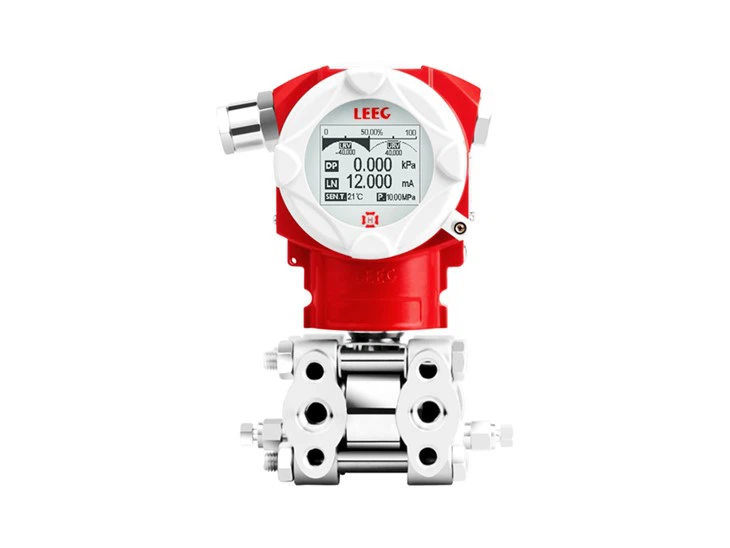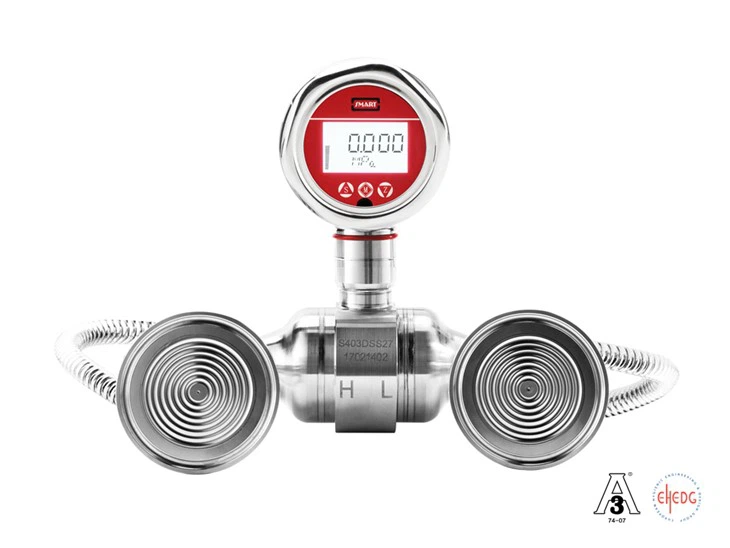
Principles of Electromagnetic Flowmeters
The working principle of an electromagnetic flowmeter is based on "Faraday's Law of Electromagnetic Induction". The flowmeter generates a magnetic field across the pipe. According to this law, when a conductive fluid flows through a magnetic field, a voltage is induced in the fluid perpendicular to both the flow direction and the magnetic field. This induced voltage is directly proportional to the flow velocity of the liquid. Electrodes capture this voltage, converting it into a flow rate signal. The transmitter processes and displays the flow rate.
Key Components of Electromagnetic Flowmeters
The following components work together to ensure the reliable and accurate measurement of conductive liquid flow in various industrial applications.
1. Electromagnets:
- Generate a stable magnetic field across the flow path.
- The magnetic field's strength is adjustable and crucial for inducing voltage in conductive fluids.
2. Flow Tube:
- The pipe or tube through which the fluid flows; it must be non-magnetic and typically made of non-conductive materials.
- Designed to ensure a uniform flow profile for accurate measurements.
3. Electrodes:
- Positioned on the flow tube's wall, they detect the voltage induced in the liquid.
- Made from materials resistant to corrosion and wear, depending on the fluid being measured.
4. Transmitter:
- Converts the voltage signal the electrodes detect into a flow rate measurement.
- Displays the flow rate and may interface with other monitoring systems for data analysis and control.
5. Signal Conditioning Unit:
- Processes the raw signal from the electrodes to reduce noise and enhance measurement accuracy.
- Helps in calibrating the flow measurement to ensure optimal performance.
6. Power Supply:
- Provides the necessary power for the electromagnets and the transmitter.
- Can be AC or DC, depending on the design of the flowmeter.
7. Display/Interface:
- Provides a user interface for monitoring and reading flow rates.
- May include features for data logging, connectivity with other devices, and alarms for flow irregularities.
Advantages of Electromagnetic Flowmeters
|
|
|
|
1. High Accuracy: They provide highly accurate flow measurements, often within ±0.5% of the reading, depending on the calibration and application.
2. No Moving Parts: With no mechanical components, magmeters reduce wear, tear, and maintenance costs, resulting in increased reliability and longevity.
3. Wide Range of Applications: Suitable for a variety of conductive liquids, including slurries and aggressive chemicals, they can measure flow rates over a wide range, from very low to very high.
4. Independence from Fluid Properties: The technology is unaffected by changes in fluid density, viscosity, and temperature, making it versatile for different industrial conditions.
5. Bidirectional Measurement: These flowmeters can accurately measure flow in both directions, which is beneficial in various applications.
Specific Applications of Electromagnetic Flowmeters
Electromagnetic flowmeters are utilized across various industries due to their versatility. Some specific applications include:
1. Water and Wastewater Treatment: Used for measuring the flow of treated and untreated water, as well as in processes such as sludge handling.
2. Food and Beverage: Essential for measuring flows of liquids like milk, juices, and syrups, where hygiene and accuracy are critical.
3. Chemical Processing: Commonly employed to measure the flow of corrosive fluids, thanks to their ability to handle aggressive chemicals without damage.
4. Pharmaceuticals: Critical for ensuring precise measurements in the production of drugs and compounds, contributing to quality control and compliance with regulations.
5. Mining and Minerals Processing: Used for measuring slurries and other mixtures in mining operations, where accurate flow measurement is crucial for efficiency.
Conclusion
Electromagnetic flowmeters are valuable instruments in the world of fluid measurement, offering accuracy, reliability, and versatility across a multitude of applications. Their operation, based on electromagnetic principles, allows them to function effectively under a variety of conditions, making them essential tools in industries ranging from water treatment to pharmaceuticals. As technology advances, their role in industrial processes is likely to expand further, providing even greater benefits in terms of efficiency and performance.
When choosing an electromagnetic flowmeter, consider the specific needs of your application and consult with LLEG for recommendations based on your requirements. If you need more detailed recommendations or help with specific models, feel free to contact us!









